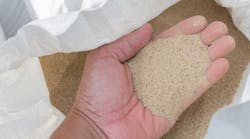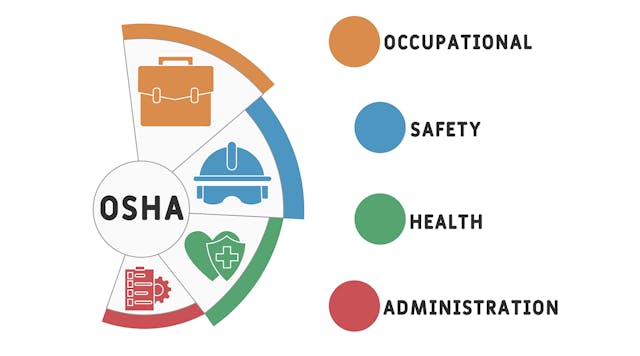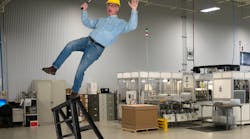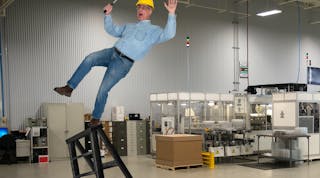The two most-common questions I hear when it comes to disposable dust masks/respirators are: “My employees wear disposable dust masks – do I have to fit test these employees?” and “How often should they change out their mask for a new one?”
First, it’s important to consider the masks themselves. These devices often are referred to as filtering facepieces and can be approved or unapproved. Unapproved dust masks can be mistaken for approved products.
So how can you tell the difference? An unapproved dust mask will not have a NIOSH stamp of approval on it. An approved filtering facepiece, such as an N95/P95/N100 particulate respirator, always will have a NIOSH stamp on it. Approved respirators must be used if a fit test is performed.
Do I have to fit test employees?
Voluntary-use masks – When the contaminant exposure does not exceed the OSHA PEL (permissible exposure limit), or the employer does not require the employees to wear a respirator (despite being underexposed), either an approved or unapproved dust mask can be made available to the employee, or they can use their own. This is referred to as voluntary use. Fit testing is not required for either product if it is voluntary use. (Refer to OSHA 29CFR1910.134 for additional information on voluntary use. For instance, the employer must provide employees with the information contained in Appendix D of OSHA 2CFR1910.134.)
Required-use masks – When the employer requires workers to wear approved dust masks to protect against contaminants, then all elements of the OSHA respiratory standard apply, including fit testing, medical evaluations, training and program evaluations. Approved protocols for fit testing are included in the standard. (Please refer to OSHA 29CFR1910.134 for details.)
When should employees get a new respirator?
When determining if employees need new respirators, remember the three D’s:
• Dirty
• Damaged
• Difficult to breathe through
Dirty respirators – A respirator cannot have dirt or debris where it contact with the face. Dirt and debris not only affect the performance of the respirator, they also can expose the user directly to contaminants, particularly if the debris is contaminated or otherwise toxic. For example: An employee works in a dusty area. He takes his mask off and leaves it in the work area for the weekend. When he comes back, the inside of the mask has been exposed to contaminants for two days. It is very likely that the first breath he takes is contaminated.
Damaged respriators – If a strap or nose clip is broken then the product cannot properly seal on the face and cannot be used. It sounds simple, but I’ve seen respirators that looked like they were 10 years old. If your mask has an exhalation valve, make sure that it is free of debris and not damaged.
Difficult to breathe through – When a facepiece becomes difficult to breathe through or a worker feels a change in the resistance to take a breath, the respirator needs to be changed or throw out. Also, if an R (resistant-to-oil) filter is used in an oil mist environment, it only can be used for a single shift (or for 8 hours of continuous or intermittent use). For the use of P filters, when oil mist is present, consult the manufacturer of that particular filter for more information.
When R or P filters are used in non-oil mist environments, dirty/damaged/difficult to breathe through is the criteria for disposal.
How do I select the correct dust mask?
Selecting the correct type of dust mask for the application also is important, because the incorrect type could make an employee vulnerable to a hazardous situation. Identifying the potential contaminant is the first step. Air sampling or testing for airborne contaminants always is recommended.
Dust masks are identified by NIOSH numbers, all of which begin with an N, R or P – letters which categorize oil-resistance designation. There are three types of dust masks:
• N series filters – These are limited to atmospheres that are free from aerosolized oil. They can be used for any solid or liquid airborne particulates that do not contain oil.
• R series filters – These can be used for removal of any particulates, including oil-based liquid aerosols.
• P series filters – These filters are designed to block 99.9 percent of particles .3 microns or larger.
Disposable dust masks have the same assigned protection factor (APF) as half-mask air purifying respirators. An APF of 10 means that the dust mask safely can be used in an atmosphere that has a hazardous concentration of up to 10 times the PEL.
What are the limitations of dust masks?
Dust masks can be used for protection from a variety of contaminants. When choosing the type of protection needed, always check with the manufacturer to ensure that the dust mask is the correct type of protection for the contaminant and level of exposure.
As with any negative pressure respirator that filters ambient air, some exposures won’t be protected by a dust mask. Be sure that a disposable dust mask is correct for your situation and conditions. When determining the exposure limit, be sure to check the toxic and hazardous substances listed in 1910 Subpart Z. Be sure to look at the Table Z-3 for mineral dusts, including nuisance dusts, which may apply to your situation.
Another useful resource is the NIOSH Pocket Guide, which provides information on a wide range of chemicals. This includes the OSHA and NIOSH exposure limits, sampling methods and recommended respirators.
What type of training is required?
Training on dust mask use must be performed by the employer. The employee must demonstrate knowledge of:
• Why the respirator is required and how improper fit can compromise the effectiveness of the respirator.
• The limitations and capabilities of the respirator.
• How to use the respirator effectively in an emergency, including situations in which the respirator malfunctions.
• How to inspect, put on and remove, use and check the seals of the respirator.
• How to recognize medical symptoms that may limit or prevent the effective use of respirators.
• Proper training is key to the effective and safe use of dust masks and respirators. You must fit test all disposable dust masks if they are part of a required respiratory program. Finally, remember to dispose of dust masks when they become dirty, damaged or difficult to breathe through.
Employee health and well-being should be the priority, and proper breathing equipment and handling support this goal – with the bonus of bolstering job satisfaction and productivity.
Rick Winship, QSSP, has worked as a safety product specialist for Motion Industries/Drago Supply since 2006. For more information, visit www.MotionIndustries.com or the Mi Safety Specialist website on Motion Industries’ Knowledge Hub.















































































